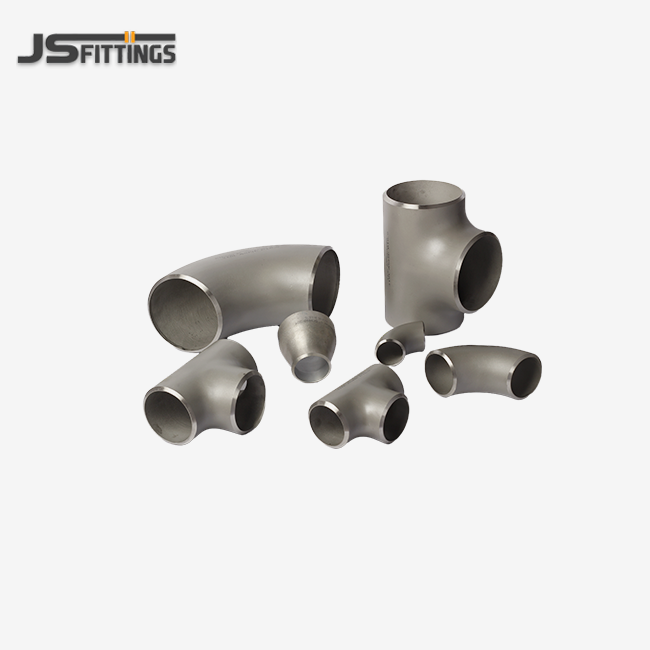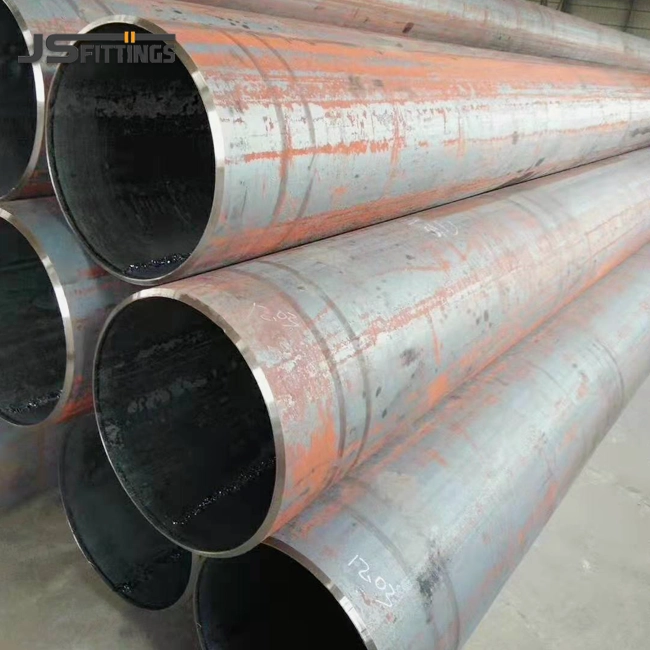Carbon steel fittings and flanges serve distinct purposes in industrial piping systems, though both are essential components. Carbon steel fittings are connecting elements that join pipes at various angles and directions, including elbows, tees, and reducers. Flanges, on the other hand, are circular plates with bolt holes that create removable connections between pipes, valves, or equipment. While carbon steel fittings provide permanent welded connections for directional changes, flanges offer detachable joints for maintenance access and equipment installation in high-pressure applications.

Understanding Carbon Steel Fittings: Core Functions and Applications
Carbon steel fittings represent the backbone of modern industrial piping systems. These components facilitate directional changes, size transitions, and branch connections throughout complex pipeline networks.
Pipe elbows redirect flow at 45°, 90°, or custom angles. Tees create branch connections for distribution systems. Reducers enable seamless transitions between different pipe diameters. Caps seal pipe ends effectively.
Manufacturing standards ensure consistent quality across applications. ANSI B16.9 governs butt-weld fitting dimensions. ASTM A234 WPB represents the most common carbon steel grade for industrial applications.
Test data reveals impressive performance characteristics:
- Tensile strength: 415-585 MPa minimum
- Yield strength: 240 MPa minimum
- Operating temperature range: -29°C to 400°C
- Pressure ratings: Up to 6000 PSI depending on schedule
If you need permanent connections with minimal maintenance requirements, then buttweld fittings prove more suitable than threaded alternatives. Socket weld options work excellently for smaller diameter applications requiring high strength connections.
Flanges Explained: Design Principles and Industrial Benefits
Flange connections revolutionize maintenance accessibility in industrial piping systems. These circular plates with precisely machined surfaces create secure, removable joints between pipes and equipment.
Raised face flanges accommodate standard gasket materials. Flat face designs suit cast iron applications. Ring type joint flanges handle extreme pressure conditions exceeding 2500 PSI. Carbon Steel Fittings and Flanges are often used in these applications due to their durability and resistance to corrosion in various environments.
ASME B16.5 defines standard flange dimensions for sizes NPS 1/2 through NPS 24. ASME B16.47 covers larger diameter applications. These manufacturing standards ensure global compatibility across suppliers.
Performance testing demonstrates reliability:
- Hydrostatic test pressure: 1.5 times working pressure
- Leak rates: Less than 4 x 10^-4 mbar·l/s for Class 150
- Temperature cycling: 1000 cycles without degradation
- Bolt torque specifications: Precisely calculated for each pressure class
If you need frequent access for cleaning or equipment replacement, then flanged connections outperform welded alternatives significantly. Oil and gas industry applications particularly benefit from this accessibility.
Material Composition and Mechanical Properties Comparison
Carbon steel composition varies slightly between fittings and flanges, optimizing each component for specific applications. Understanding these differences helps engineers select appropriate materials.
Standard carbon steel contains 0.15-0.35% carbon content. Higher carbon percentages increase strength but reduce weldability. Manganese content (0.85-1.20%) enhances hardenability and strength characteristics.
Durable materials performance varies based on application:
| Property | Carbon Steel Fittings | Carbon Steel Flanges |
|---|---|---|
| Minimum Yield Strength | 240 MPa | 250 MPa |
| Ultimate Tensile Strength | 415-585 MPa | 485-620 MPa |
| Elongation % | 22% minimum | 21% minimum |
| Hardness (HB) | 143-187 | 137-187 |
Corrosion resistance depends on environmental conditions. Mill scale provides temporary protection during storage. Protective coatings extend service life in corrosive environments.
If you need components for high-stress applications, then forged flanges offer superior grain structure compared to seamless fittings. Pressure ratings directly correlate with material thickness and grade selection.
Installation Methods and Connection Techniques
Installation procedures differ significantly between fittings and flanges. Each method requires specific skills, equipment, and quality control measures.
Welded connections for fittings demand certified welders and proper procedures. Preheating requirements depend on material thickness and ambient temperature. Post-weld heat treatment may be necessary for critical applications.
Flange installation involves precise alignment and controlled bolt tightening. Gasket selection affects system performance and leak prevention. Bolt pattern and torque sequences follow established protocols. Carbon Steel Fittings and Flanges are commonly used for their strength and cost-effectiveness in industrial applications.
Installation time comparison reveals practical differences:
- Butt-weld fitting installation: 2-4 hours including welding and inspection
- Flange connection assembly: 30-60 minutes for standard sizes
- Non-destructive testing adds 1-2 hours for welded joints
- Pressure testing applies to both connection types equally
Quality control requirements vary by connection type. Radiographic testing verifies weld integrity for critical services. Flange face inspection ensures proper gasket seating and leak prevention.
If you need rapid installation with minimal specialized equipment, then bolted flange connections prove more practical than welded alternatives.
Cost Analysis and Economic Considerations
Economic factors influence component selection throughout project lifecycles. Initial costs represent only one element in total cost of ownership calculations.
Material costs vary based on manufacturing complexity. Flanges require additional machining operations compared to standard fittings. Forging processes add value through improved mechanical properties.
Installation cost breakdown reveals hidden expenses:
- Welding labor: $150-300 per joint depending on size and complexity
- Flange assembly: $50-100 per connection including gaskets and bolts
- Inspection costs: $200-500 per weld for radiographic testing
- Rework expenses: 10-15% additional for welding defects
Maintenance considerations affect long-term economics. Flanged systems enable component replacement without cutting pipes. Welded systems require cutting and rewelding for modifications.
Lifecycle cost analysis favors flanges for applications requiring periodic maintenance. Industrial piping systems with frequent equipment changes benefit from flange accessibility.
If you need to minimize initial project costs, then welded fittings offer advantages over flanged alternatives. However, maintenance-intensive applications justify higher flange costs through reduced downtime.
Application Guidelines and Selection Criteria
Proper component selection depends on service conditions, maintenance requirements, and system design parameters. Engineering specifications guide decision-making processes.
High strength applications favor welded connections for permanent installations. Seamless fittings eliminate potential leak paths in critical services. Threaded fittings suit low-pressure applications with size limitations. Carbon Steel Fittings and Flanges are often selected for their robustness and cost-effectiveness in general-purpose piping systems.
Service condition evaluation includes multiple factors:
- Operating pressure and temperature ranges
- Fluid compatibility and corrosion potential
- Vibration levels and dynamic loading
- Maintenance access requirements
- Emergency shutdown procedures
Industry-specific preferences reflect operational experience. Petrochemical plants favor flanged connections for equipment interfaces. Power generation facilities use welded systems for high-temperature steam lines.
Code compliance requirements vary by application. ASME B31.3 governs process piping design. ASME B31.1 applies to power piping systems. Local regulations may impose additional restrictions.
If you need compliance with strict safety codes, then both fittings and flanges must meet identical material and testing requirements regardless of connection method.
Conclusion
Understanding the fundamental differences between carbon steel fittings and flanges enables informed decision-making for industrial piping projects. Fittings provide permanent welded connections ideal for directional changes and size transitions, while flanges offer removable joints essential for maintenance access and equipment interfaces. Both components serve critical roles in modern piping systems, with selection depending on specific application requirements, maintenance needs, and economic considerations. Proper material selection, installation procedures, and supplier partnerships directly impact system reliability and project success across diverse industrial applications.
JS FITTINGS: Your Trusted Carbon Steel Fittings and Flanges Manufacturer
Selecting the right carbon steel fittings and flanges supplier significantly impacts project success and long-term performance. JS FITTINGS combines four decades of manufacturing excellence with comprehensive quality systems to deliver reliable plumbing components for demanding applications.
Our advanced production facilities maintain strict adherence to international manufacturing standards. ISO 9001 certification ensures consistent quality control throughout production processes. CE marking confirms European compliance for global market access.
JS FITTINGS advantages include:
- Four specialized production lines dedicated to butt-weld fittings and flanges
- Comprehensive size range from 1/2" to 60" covering standard and custom requirements
- Multiple pressure ratings including Class 150, 300, 600, 900, 1500, and 2500
- Complete material traceability with mill test certificates for every shipment
- Expedited delivery schedules to meet critical project deadlines
- Technical support from experienced engineers for application guidance
- Competitive pricing through efficient manufacturing processes
- GOST-R certification for Russian market compliance
- Extensive inventory for immediate shipment of standard components
- Custom manufacturing capabilities for special applications
Our global client base spans Middle East infrastructure projects, South American industrial developments, European process facilities, and Asian manufacturing plants. This diverse experience provides valuable insights into regional requirements and international standards.
Quality assurance extends beyond manufacturing through comprehensive testing protocols. Hydrostatic pressure testing verifies component integrity. Dimensional inspection ensures compatibility with existing systems. Material analysis confirms chemical composition compliance.
Whether your project requires standard pipe fittings for routine applications or specialized flanges for extreme service conditions, JS FITTINGS delivers solutions that minimize project risk while meeting demanding performance requirements. Our commitment to continuous process improvement ensures evolving capabilities that anticipate future industry needs.
Ready to discuss your carbon steel fittings and flanges requirements? Our technical team stands ready to provide application guidance and competitive quotations. Contact us at admin@jsfittings.com to connect with experienced professionals who understand the critical role quality components play in project success.
References
1. American Society of Mechanical Engineers. "ASME B16.9-2018: Factory-Made Wrought Buttwelding Fittings." ASME International, 2018.
2. American Society of Mechanical Engineers. "ASME B16.5-2020: Pipe Flanges and Flanged Fittings NPS 1/2 through NPS 24." ASME International, 2020.
3. ASTM International. "ASTM A234/A234M-19: Standard Specification for Piping Fittings of Wrought Carbon Steel and Alloy Steel for Moderate and High Temperature Service." ASTM International, 2019.
4. Nayyar, Mohinder L. "Piping Handbook, 8th Edition." McGraw-Hill Professional, 2019.
5. American Petroleum Institute. "API 5L-2018: Specification for Line Pipe." API Publishing Services, 2018.
6. Singh, Karan. "Industrial Piping Design and Engineering: A Practical Guide." Gulf Professional Publishing, 2021.


_1758177519500.webp)
